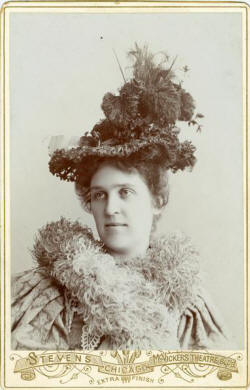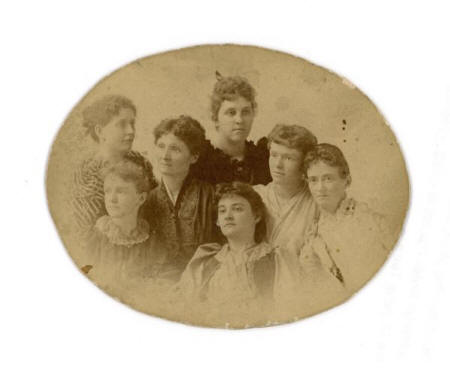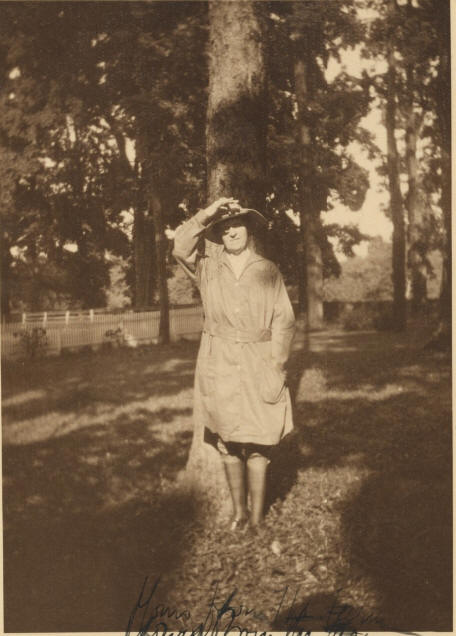

Queer Places:
498 West End Ave, New York, NY 10024
55 Liberty St, New York, NY 10005
25 W 43rd St, New York, NY 10036
317 3rd st, SE, Washington, DC
 Gwyneth
King “Netha” Roe (March 30, 1868 - April 5, 1968) was a teacher of the
Delsarte system of physical education with Emily Mulkin Bishop; advocate of
women's dress reform, suffrage, and the Woman's Peace Party; and friend of
several members of the La Follette family and of numerous political
progressives, radicals, anarchists, and muckrakers. She was a member of the
Heterodoxy Club. She was the wife of Gilbert Roe, a New York attorney and former law partner of Robert M. La Follette.
Gwyneth
King “Netha” Roe (March 30, 1868 - April 5, 1968) was a teacher of the
Delsarte system of physical education with Emily Mulkin Bishop; advocate of
women's dress reform, suffrage, and the Woman's Peace Party; and friend of
several members of the La Follette family and of numerous political
progressives, radicals, anarchists, and muckrakers. She was a member of the
Heterodoxy Club. She was the wife of Gilbert Roe, a New York attorney and former law partner of Robert M. La Follette.
Gwyneth King Roe was born in New Providence, Iowa, daughter of John H. King and Permelia Andrews King, on March 30, 1868. Her father, a member of the Iowa Legislature, left Iowa to found the town of Chamberlain, South Dakota in 1880. In 1883 she went as a student to Highland Ball outside Chicago, where she became interested in the Delsarte method of physical education, as taught by Emily Mulkin, later Emily Bishop. Mrs. Roe was later to form a life-long teaching partnership with Mrs. Bishop. “Our theory was based on the principal of relaxation and release from nervous tension, not as an end in itself but as a means of finding the basic centers of feeling and being.”
In 1887 the King family moved to Rapid City, South Dakota. Mr. King spent increasing amounts of time in Washington, D.C., working on land cases, many of them for Dakota Indians. Gwyneth (Netha) King went to Yankton College for two years, spent her summers at Chautauqua, New York, working with Emily Mulkin, and was invited to teach for two years at the University of South Dakota in 1889-1890.
During the 1890s Miss King taught in Washington, D.C. schools, at Western and Eastern high schools, in the YWCA, at a Catholic Girl's School and at Miss Somers School, now Mt. Vernon Seminary. She pioneered in urging freedom of dress for women, advocating a simple one-piece shift in place of the elaborate, corseted attire of the time.
In 1895 she traveled to Madison, Wisconsin in place of Mrs. Bishop, to teach a class of women organized by Mrs. Robert La Follette. There she met Gilbert Roe, who later became her husband, and began her long association with the La Follette family. She married Gilbert Roe in 1899 and moved to New York where he entered law practice and she set up a studio for “Health and Efficiency” at 114 West 72nd Street. She continued to teach for the next ten years.

An oval portrait of Gwyneth King Roe with Emilie Neidlinger, Emily Bishop-Netha, Dorothy Bishop, Adalaide (Adelaide) Jones, Gertrude Bishop, and Lucia Benedict. "Calling ourselves The Muses."

Gilbert Roe maintained his close relationship with Robert La Follette, and helped to bring some of the reform legislation of Wisconsin to New York. He drafted New York State's first Workman's Compensation act and the N.Y. Primary Act. In 1911 he wrote “Our Judicial Oligarchy” in which he charged that judges placed property rights above human rights. He was chairman of the first Men's League for Woman's Suffrage and he and Mrs. Roe marched in the first suffrage parade held in New York City in 1911. He filed an amicus curiae on behalf of Eugene Debs, socialist labor leader, and was counsel to five Socialist New York assemblymen who were deprived of their seats for their anti-World War I attitudes. In 1917 he defended Senator La Follette and won exoneration for him from disloyalty charges in the Senate. He laid the groundwork for the Teapot Dome investigation in 1922-23, when as counsel to the Senate Committee of Manufacture he investigated the oil industry. In 1924 he was Eastern campaign manager for La Follette, a Progressive party candidate for the Presidency.
Anarchists Alexander Berkman and Emma Goldman were house guests of the Roes at Pelham Manor, and Emma Goldman once fled police by staying at the Roe home. Lincoln Steffens was a close family friend, and Mrs. Roe remembers sharing a box with John Reed the night before he sailed for Russia, where he wrote Ten Days that Shook the World, about the Russian Revolution.
In early 1919, the Roes moved from their suburban retreat back to the Upper West Side at 498 West End Avenue, near where Gilbert and Netha began their life together in New York. According to a series of family newsletters written in 1920 and 1921 by 13 years old Jack Roe, the family took every advantage of returning to the city. Busy as he was in 1920, Gilbert Roe somehow found the time to take his family to numerous movies, plays, and lectures, an aeronautical exposition, and, more than once, to Atlantic City. The Roes dined out occasionally but more often invited guests to the apartment. Visiting King and La Follette family members were frequent guests, as were close friends and political allies. According to Jack, at least some of the food the Roes served in Manhattan came from a 150-acre working farm at Wappinger's Falls, in Dutchess County near Poughkeepsie, that Roe had purchased - to Netha's surprise.
Mr. Roe died in 1929. In 1934 Mrs. Roe went to live with her daughter, Janet who was director of a nursery school for the Tennessee Valley Authority in Norris, Tennessee. They moved to Washington, D.C. in 1943.
The Roes had three children: Jack, who died in 1956, Janet (Mrs. Jerome Keller), and Gwyneth (Mrs. Edwin W. Murphy). Mrs. Roe's sister, Mrs. Arthur B. Fairbank, is the mother of John King Fairbank, director of the East Asian Research Center at Harvard.
My published books: